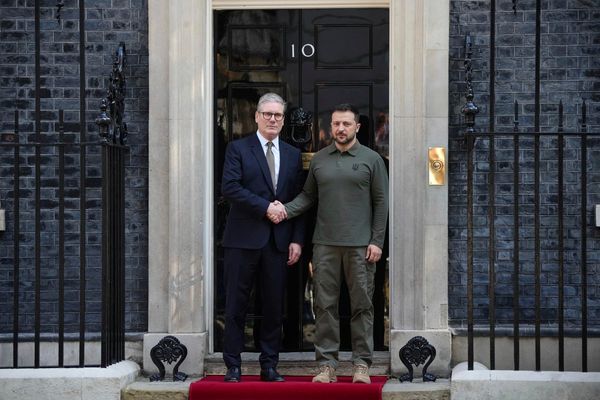
High school is tough for a lot of kids. The trudge through disconnected courses that seem irrelevant. The social scene is debilitating. Life challenges may include food and shelter insecurity. This combination of challenges, boredom, frustration, and social humiliation is more than they can take. Some ultimately drop out or look for an alternative.
Trying to push all kids through a content-centric, compliance-oriented model just won’t work. A variety of alternative approaches have been attempted. Following are a few approaches educators have to develop for youth that haven’t been successful in traditional schools.
Ten years ago, many of us were hopeful about blended alternative high school programs—but (like credit recovery programs before them) many of those half-day, sit in a computer lab and click through online content learning experiences turned out to be boring and not very effective. There are still a handful of regional chains operating these kinds of programs, but many are under attack given weak performance (even considering growth).
The best of blends are typically not more than 50% online, feature small group, teacher-led instruction, real world connections, and strong youth and family supports.
Engaging Alternatives
Bronx Arena High School serves over-aged, under-credited youth who have dropped out or are not on track to graduate; these are typical characteristics of a transfer school in NYC. The small, relationship-based school (with no more than 200 students) partners with nonprofit SCO for youth and family services. Each student is paired with an advocate counselor, who provides guidance and support for individual goal setting in the personalized, self-paced environment.
Boston Day and Evening Academy is a student-centered, competency-based school where students progress based on demonstrated mastery rather than seat time. Enrollment begins with an intensive orientation including post-secondary planning. Groups of about 18 students spend time every day with an advisor. Students benefit from wraparound services and a school open 12 hours a day. Teachers use a variety of digital tools that help create a personalized approach. The school year includes breaks for community-connected projects (see feature).
Health Leadership High School in Albuquerque is a small project-based high school for students not well served by traditional schools. The hands-on, community connected, project-based school prepares young people to become community health advocates and leaders in the healthcare industry.
Each summer the staff solicits project ideas from community health providers. Most students work on three per day. Every project must have deliverables valuable to the community. Students meet with their advisor for an hour each day, where they check in on projects and build social and emotional skills using asset-based resources. Students also participate in a paid internship (see feature).
ACE Leadership High School, an affiliate of Health Leadership in Albuquerque, serves about 400 students who have already or were on their way to dropping out of high school. The project-based approach provides authentic and meaningful learning experiences for young people who love to design and build things and want to become leaders in the construction profession (see feature).
Liberty Academy, north of Kansas City, organizes learning in six-week bursts of interest-based learning often connected to one of 100 community partners. Students set goals in about four success skills during each burst. Teachers in this competency-based school help students to document their growth weekly.
Integrated Supports
RISE High, a program of DaVinci Schools, serves the unique needs of Los Angeles youth navigating foster care, housing instability, probation, or other circumstances that have disrupted their academic journeys. The integrated flex-schedule, credit recovery model gives youth the voice and choice necessary to pursue their academic goals while honoring the responsibilities they have in their lives. Opened in 2016, RISE won an XQ grant.
RISE High works with a network of youth-development agencies, municipalities and support centers to provide counseling, case management, tutoring, job readiness training, career pathways, internships, extracurricular opportunities, leadership development, and more. RISE sites are co-located with service providers across the city.
Eagle Rock (@EagleRockSchool) in Estes Park, Colorado (above), an initiative of American Honda, is both a tuition-free private residential high school and a professional development center for educators (and a very cool place to visit). There are five expectations that guide course and project design: developing an expanding knowledge base, communicating effectively, creating and making healthy life choices, participating as an engaged global citizen, and providing leadership for justice.
High Dose Tutoring
Brooklyn LAB personalizes learning with a next-gen platform and two hours of small group tutoring daily (see feature). The middle and high school serves students in the heart of the Brooklyn Tech Triangle. While not considered an alternative school, about 40% of LAB learners have complex needs. Opened in 2017, the high school won an XQ grant.
Fusion Academy, founded in Solano Beach, California, is a network of 52 one-on-one private schools educating middle and high school students with particular attention to social-emotional learning.
Alternative Networks
The Upstream Collaborative is a project led by Big Picture Learning and supported by the Stuart Foundation to redesign alternative education schools in California. This community of practice includes schools across the state classified as ‘alternative’ and supports strategies that offer students equitable access to deep and sustained learning.
Another Big Picture partnership in a high-challenge community is Vaux High School. Big Picture works with the School District of Philadelphia, the local housing authority, the teacher’s union, Community College of Philadelphia, and youth and family services. Ninth graders take a Real World Learning class to gain work-ready competencies and they start internships in tenth grade. Students present public products at exhibitions at the end of each semester.
The Internationals Network for Public Schools serves immigrant youth who are new to learning the English language. The 29-school network integrates language development and academic content while building student and family capacity for integration into American society (featured on CompetencyWorks and EdSource).







